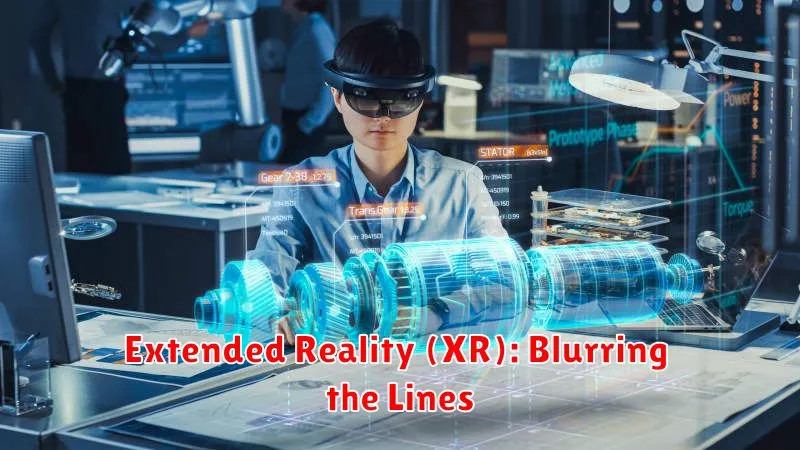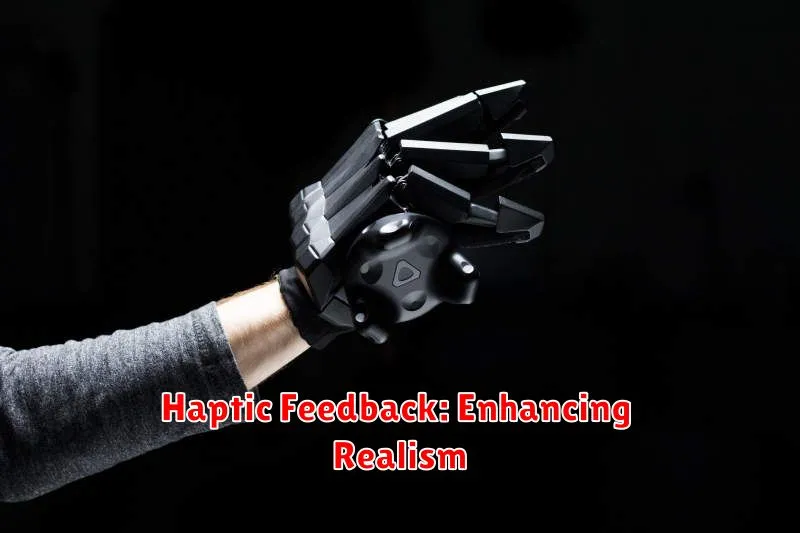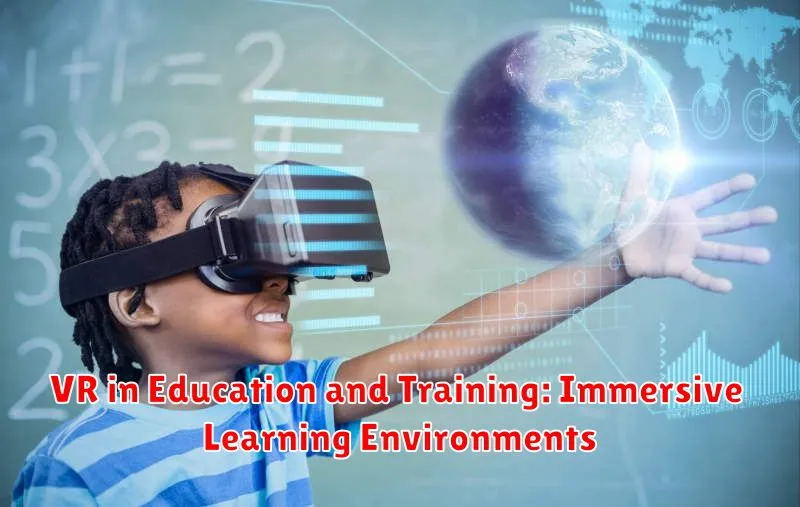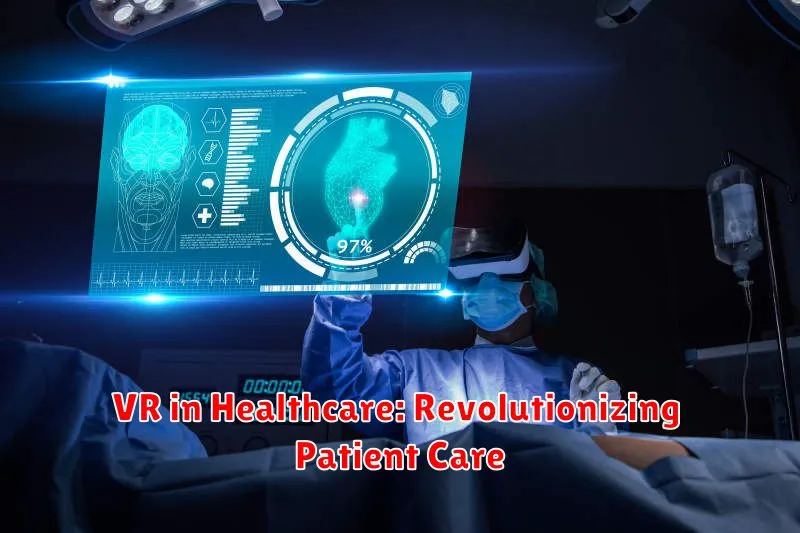The world of technology is rapidly evolving, with new innovations constantly pushing boundaries and changing the way we live, work, and interact. Among the most captivating advancements is virtual reality (VR), a technology that is redefining our perception of reality and opening up a vast array of possibilities. From immersive gaming experiences to transformative healthcare applications, VR is rapidly becoming an integral part of our future.
As VR technology continues to evolve at a breakneck pace, it is more important than ever to understand the latest trends shaping this exciting landscape. This article will delve into the cutting-edge advancements in VR, exploring the key drivers of innovation and the potential impact on various industries. From advanced hardware and immersive experiences to ethical considerations and the rise of the metaverse, we will take a deep dive into the future of VR and its transformative potential.
Immersive Experiences Redefined
Virtual reality (VR) is no longer a futuristic dream; it’s rapidly becoming a part of our reality. With advancements in technology, VR is pushing the boundaries of what’s possible, revolutionizing how we interact with the world around us. Gone are the days of clunky headsets and limited experiences. Today, VR is transforming industries, redefining entertainment, and even impacting our understanding of the world.
One of the most significant trends driving VR’s evolution is the increasing realism and immersion. High-fidelity graphics are creating lifelike environments, while haptic feedback allows users to physically feel their virtual surroundings. This level of immersion is blurring the lines between the virtual and the real, making experiences feel more authentic and engaging than ever before.
VR is also moving beyond individual experiences. Social VR is allowing users to connect and interact with others in virtual spaces, fostering new forms of collaboration, communication, and social interaction. Imagine attending a concert, playing a game, or having a meeting with colleagues, all in a shared virtual environment. This opens up a world of possibilities for social connection and community building, transcending geographical limitations.
The future of VR is incredibly bright. Emerging technologies like 5G and AI are further enhancing the potential of VR, pushing the boundaries of what we can achieve. From creating immersive training simulations to enabling remote collaboration, VR is set to transform how we learn, work, and play.
VR isn’t just about entertainment; it’s about redefining our experiences. It’s about creating new possibilities, breaking down barriers, and shaping the future. As VR technology continues to evolve, it will continue to reshape the world around us, and we’re only beginning to see the transformative power it holds.
The Evolution of Virtual Reality
Virtual reality (VR) has come a long way since its early days as a niche technology. From its humble beginnings in the 1960s to its current widespread adoption across various industries, VR has undergone a remarkable transformation. This evolution has been driven by advancements in computer processing power, display technologies, and input devices. Let’s take a journey through the key milestones that shaped the landscape of VR.
The genesis of VR can be traced back to the 1960s, with the creation of the Sensorama machine, a groundbreaking device designed to immerse viewers in a simulated world. The 1980s saw the emergence of head-mounted displays (HMDs), such as the VPL EyePhone, which brought the promise of virtual reality closer to reality. However, early VR systems were limited by their bulky hardware, low resolution, and lack of processing power.
The turning point for VR came in the late 1990s and early 2000s, with the advent of immersive gaming experiences. Games like Quake and Half-Life showcased the potential of VR for entertainment. However, widespread adoption remained elusive due to the high cost and limited availability of VR hardware.
The rise of mobile VR in the mid-2010s revolutionized the industry. The introduction of affordable headsets like the Samsung Gear VR and the Google Cardboard made VR accessible to a wider audience. This period also saw significant advancements in graphics processing units (GPUs), leading to more realistic and immersive experiences.
Today, VR is poised for exponential growth. The development of high-end headsets like the Oculus Quest 2 and the Valve Index has pushed the boundaries of what’s possible with VR. Applications beyond gaming, including training and education, healthcare, and design, are rapidly emerging. As VR technology continues to evolve, we can expect to see even more innovative and transformative applications in the years to come.
Key Trends Shaping the VR Landscape
Virtual Reality (VR) technology has witnessed a surge in popularity, captivating users with its immersive experiences. As the VR landscape continues to evolve, several key trends are shaping its trajectory, paving the way for a future where VR becomes an integral part of our lives. Here are some of the prominent trends that are driving the future of VR:
1. Enhanced Realism: Pushing the boundaries of realism is paramount in VR. Advancements in display technology, like high-resolution displays and wider field of view, create more lifelike and immersive experiences. The use of haptic feedback systems further enhances the sense of presence by providing tactile sensations that complement the visual and auditory cues.
2. Cloud-Based VR: The shift towards cloud-based VR is revolutionizing accessibility. By processing data in the cloud, VR experiences can be delivered to users with less powerful hardware, making VR more accessible to a wider audience. It also facilitates the development and distribution of resource-intensive VR applications, enabling creators to push the boundaries of what’s possible.
3. Rise of Mobile VR: Smartphones have become ubiquitous, and mobile VR is leveraging this widespread adoption. Mobile VR headsets, powered by smartphones, provide an affordable and convenient entry point into the world of VR. They are particularly popular for casual gaming and immersive entertainment experiences.
4. Applications Beyond Gaming: While VR initially gained traction in the gaming industry, its applications are expanding rapidly. Industries such as education, healthcare, training, and design are adopting VR to create engaging learning environments, provide realistic simulations, and improve workflow efficiency.
5. Integration with AI: The integration of artificial intelligence (AI) is enhancing VR experiences by adding intelligent agents, personalized recommendations, and adaptive environments. AI algorithms can tailor VR experiences to individual preferences, creating more engaging and interactive encounters.
6. The Metaverse: The concept of a persistent, shared virtual world known as the metaverse is gaining momentum. VR is a key component of the metaverse, providing immersive experiences and enabling users to interact with each other and digital objects in a virtual space. The metaverse holds immense potential for social interaction, commerce, and entertainment.
As these trends continue to shape the VR landscape, we can anticipate a future where VR becomes seamlessly integrated into our daily lives, revolutionizing the way we work, learn, play, and connect with the world around us.
Extended Reality (XR): Blurring the Lines

The realm of technology is constantly evolving, with advancements pushing boundaries and blurring the lines between the physical and digital worlds. Among the most captivating developments is the emergence of Extended Reality (XR), an umbrella term encompassing Virtual Reality (VR), Augmented Reality (AR), and Mixed Reality (MR).
VR immerses users in entirely computer-generated environments, creating a sense of presence and interaction within a virtual space. AR overlays digital elements onto the real world, enriching our perception of reality by adding information, graphics, or interactive features. MR blends the physical and virtual worlds seamlessly, allowing users to interact with virtual objects in real-world spaces.
The convergence of these technologies under the XR banner signifies a transformative shift, blurring the boundaries between the real and virtual. XR applications are proliferating across diverse industries, from gaming and entertainment to healthcare, education, and manufacturing. By enabling immersive experiences and enhancing human interaction with technology, XR is paving the way for a future where the physical and digital realms become increasingly intertwined.
Haptic Feedback: Enhancing Realism

Stepping into a virtual world is an immersive experience, but it can feel incomplete without the sensation of touch. Haptic feedback, the technology that provides physical sensations to users, plays a crucial role in bridging the gap between the virtual and the real.
Imagine grabbing a virtual object. With haptic feedback, you can feel the weight, texture, and even the resistance of the object as you interact with it. This tactile element adds a new layer of realism to VR experiences, making them feel more intuitive and engaging.
Haptic feedback is not limited to simple vibrations. Advanced systems are being developed to simulate a wide range of sensations, such as the feeling of wind on your skin, the pressure of a handshake, or even the pain of a virtual injury. This level of detail enhances the believability and emotional impact of VR applications.
The possibilities of haptic feedback in VR are endless. It can revolutionize fields like training and education by allowing users to experience real-world scenarios without the risks. In gaming, it can create immersive and visceral experiences that were previously unimaginable.
As technology continues to advance, we can expect even more sophisticated and realistic haptic feedback systems. These advancements will further blur the lines between the virtual and the real, creating more engaging and impactful experiences for users.
VR in Gaming and Entertainment: Next-Level Immersion

Virtual reality (VR) is no longer a futuristic concept but a rapidly evolving technology that’s transforming how we interact with digital content. VR in gaming and entertainment has become a focal point of this evolution, offering experiences that were once unimaginable. By immersing users in completely simulated environments, VR opens up a world of possibilities for creators and consumers alike.
In gaming, VR provides a level of immersion that traditional gaming simply cannot match. Players can step into the shoes of their favorite characters, explore breathtaking virtual worlds, and engage with gameplay in a way that feels incredibly real. From action-packed adventures to immersive simulations, VR is pushing the boundaries of what’s possible in the gaming world.
The entertainment industry is also embracing VR with open arms. Beyond gaming, VR is being used to create unforgettable experiences in film, music, and even live events. Imagine watching a concert from the front row, attending a virtual sporting event, or exploring historical landmarks from the comfort of your own home. These are just a few examples of how VR is revolutionizing entertainment.
The future of VR in gaming and entertainment is incredibly bright. With advancements in hardware and software, we can expect even more realistic and immersive experiences. Haptic feedback, which simulates touch and sensation, will enhance the feeling of presence in virtual environments. And as VR technology continues to mature, we can expect to see even more innovative and groundbreaking applications.
VR is more than just a new technology; it’s a paradigm shift in how we experience digital content. As VR continues to evolve, it will undoubtedly shape the future of gaming and entertainment, offering levels of immersion and engagement that we’ve only dreamed of before.
VR in Education and Training: Immersive Learning Environments

Virtual reality (VR) technology is rapidly transforming various sectors, including education and training. VR offers immersive learning environments that can revolutionize the way we acquire knowledge and skills. By creating simulated experiences, VR allows learners to engage in real-world scenarios, fostering deeper understanding and enhancing retention.
One of the key benefits of VR in education is its ability to provide hands-on learning experiences that are often difficult or impossible to replicate in traditional settings. For example, medical students can practice complex surgical procedures in a virtual environment, gaining valuable experience without risking patient safety. Similarly, engineers can design and test prototypes in VR, reducing the need for expensive physical models.
VR also offers a personalized learning experience tailored to individual needs and learning styles. Learners can explore different topics at their own pace, focusing on areas where they need additional support. This personalized approach can improve engagement and motivation, leading to better learning outcomes.
Moreover, VR can foster collaboration and communication among learners. Virtual environments allow students to work together on projects, share ideas, and receive feedback from instructors and peers. This collaborative learning experience can enhance teamwork skills and improve communication abilities.
While VR in education and training is still in its early stages, its potential is immense. As technology continues to advance and become more affordable, we can expect to see VR play an increasingly important role in shaping the future of learning.
VR in Healthcare: Revolutionizing Patient Care

Virtual reality (VR) is rapidly transforming various industries, and healthcare is no exception. With its immersive and interactive capabilities, VR is revolutionizing patient care, offering innovative solutions for diagnosis, treatment, rehabilitation, and training.
One of the most significant impacts of VR in healthcare is its ability to improve patient education. VR allows patients to visualize complex medical conditions and procedures in a way that traditional methods cannot. For example, VR simulations can help patients understand their heart disease, diabetes, or even the process of a surgery. This improved understanding empowers patients to actively participate in their treatment and make informed decisions about their health.
VR is also revolutionizing pain management. VR can distract patients from pain by immersing them in calming and engaging virtual environments. Studies have shown that VR can be particularly effective in managing chronic pain, post-surgical pain, and even pain associated with chemotherapy. This technology offers a non-pharmacological approach to pain relief, reducing the need for opioids and other medications.
Moreover, VR is transforming rehabilitation. By creating interactive and engaging virtual environments, VR can help patients recover from injuries and illnesses more effectively. For example, VR games can help stroke patients regain motor skills, while VR simulations can be used to train patients on how to perform daily tasks after a joint replacement surgery. This personalized and immersive approach to rehabilitation promotes faster recovery and improves patient outcomes.
Finally, VR is revolutionizing medical training. VR allows medical students and professionals to experience realistic simulations of various medical scenarios, including surgeries, patient interactions, and emergency situations. This technology offers a safe and cost-effective way to train healthcare providers, enhancing their skills and preparing them for real-world challenges.
The potential of VR in healthcare is vast and continues to evolve. As the technology advances and becomes more accessible, it is poised to play an increasingly vital role in improving patient care, enhancing medical education, and revolutionizing the healthcare industry.
The Future of Virtual Reality: Limitless Possibilities
Virtual reality (VR) has come a long way since its inception, transforming from a futuristic concept into a tangible reality. Today, VR is permeating various aspects of our lives, from gaming and entertainment to education, healthcare, and even business. As technology continues to advance at an unprecedented rate, the future of VR holds limitless possibilities, promising to revolutionize how we interact with the world around us.
One of the most exciting developments in VR is the emergence of immersive experiences. With the advancement of hardware and software, VR is becoming increasingly realistic, allowing users to feel truly present in virtual environments. This will lead to more engaging and impactful experiences in areas such as education, where students can learn by doing in simulated environments, or healthcare, where doctors can practice complex procedures in a safe and controlled setting.
Another key trend is the convergence of VR with other technologies, such as artificial intelligence (AI) and augmented reality (AR). This convergence will create even more immersive and interactive experiences, blurring the lines between the physical and digital worlds. Imagine a future where VR and AI work together to create personalized learning experiences, or where AR overlays information onto the real world, enhancing our understanding of our surroundings.
The future of VR is not without its challenges, including issues related to privacy, accessibility, and ethical considerations. However, with careful planning and development, these challenges can be overcome, paving the way for a future where VR plays a transformative role in our lives. From fostering empathy and understanding to empowering individuals and transforming industries, the possibilities of VR are truly limitless.

